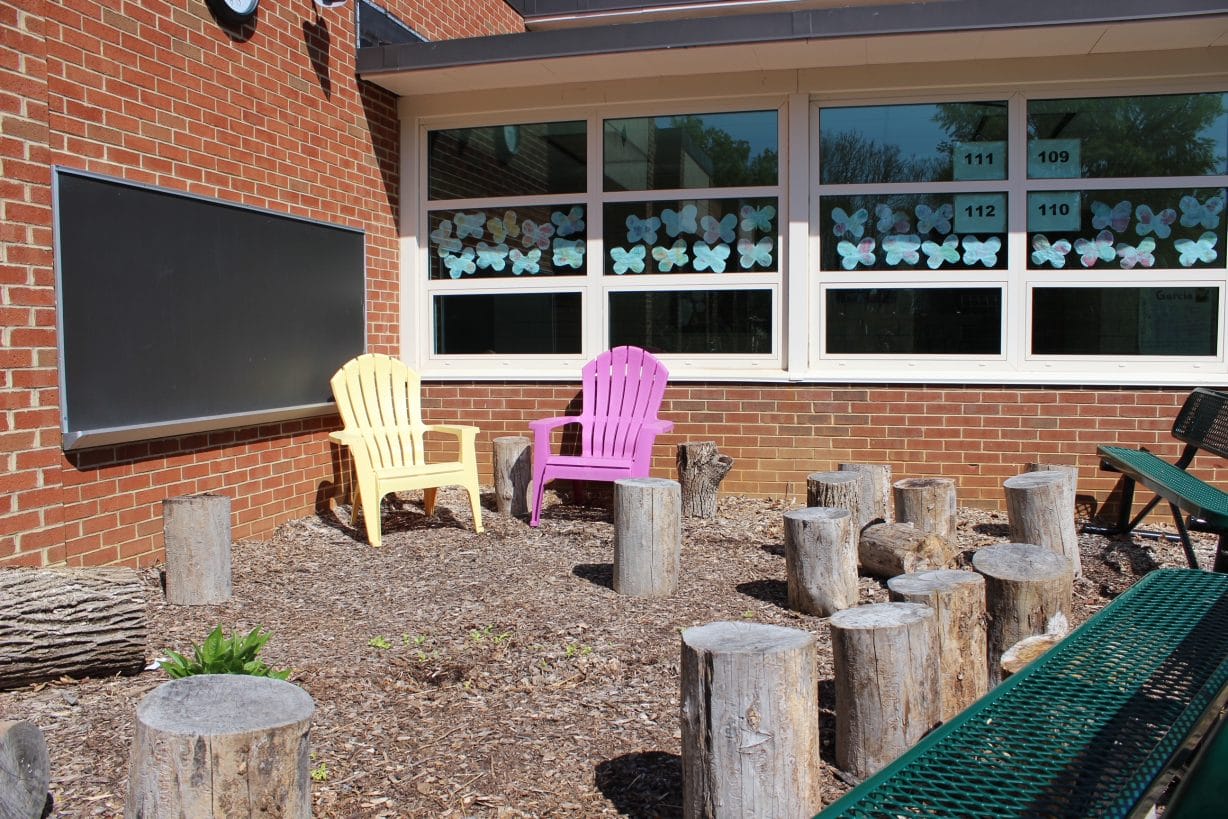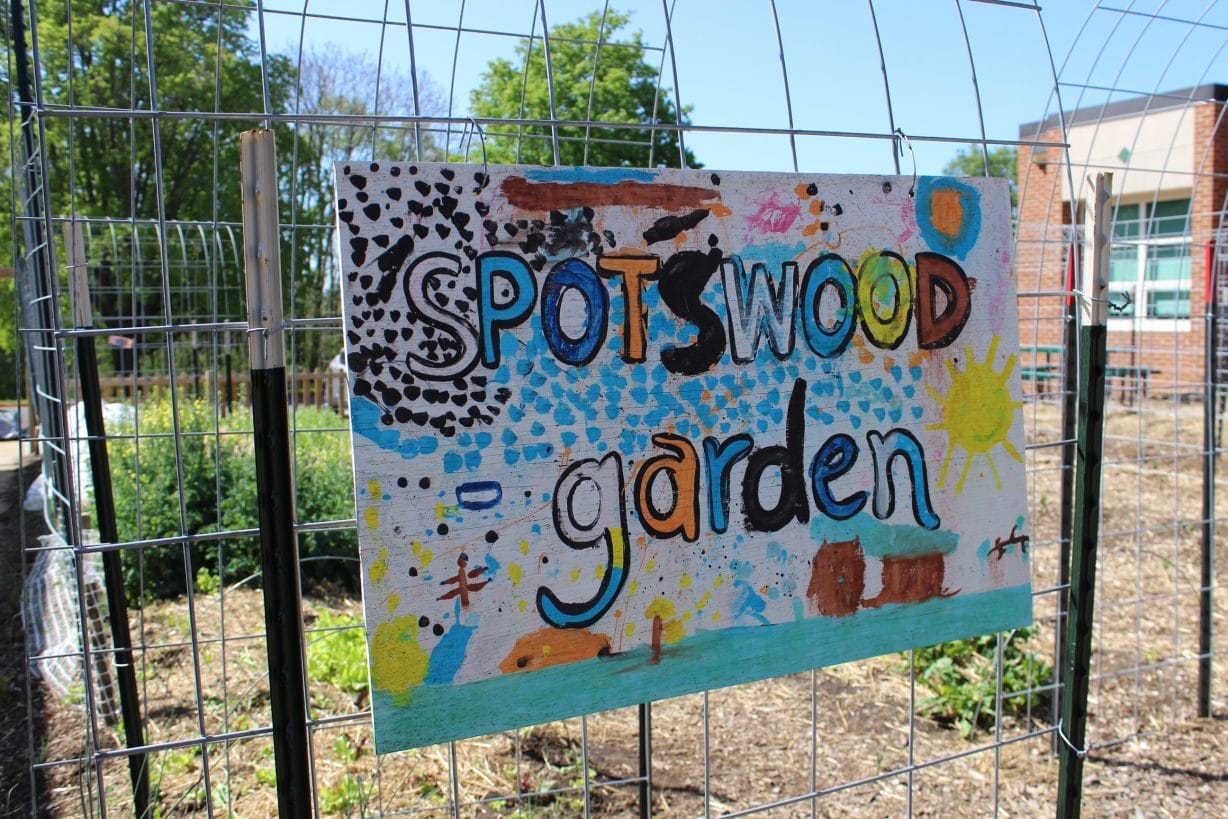
By Bridget Manley, publisher
Long before the pandemic, teachers and students at Spotswood Elementary School had been using outdoor spaces around their school property as living classrooms.
Students spent time in their community garden planting vegetables while learning about the lifecycle of food systems. They took walks through nature trails across from the school to learn about the world around them, and participated in classes in the “courtyard,” the enclosed outdoor center of the school where repurposed chalkboards and sunshine serve as resources to the teachers.
During the pandemic, schools nationwide looked for ways to safely bring students back to in-person learning. The outdoors, which had already exploded in popularity as a safe way to gather, became an essential tool in safe learning. And now, those spaces are not only sticking around as part of the educational experience, but the city schools are looking to expand and improve them.
“We were already prepared to leverage these spaces because our teams had been so intentional,” said Spotswood School Principal Deb Cook. “What was nice about it was that we weren’t being reactive to the pandemic, we were proactive to what good learning practices were, and it just so happened that there was a microscope placed on those practices because of the pandemic.”
City school leaders want to keep the momentum going on outdoor learning. The Harrisonburg City School Board is laying the groundwork to expand the infrastructure of “outdoor learning spaces” after implementing more at city schools during the pandemic.
According to multiple studies, students experience cognitive skill enhancement, reduced stress, improved sleep, and can lead to better grades and test scores when outdoor learning is used.
The Harrisonburg School Board voted unanimously to enter into contract negotiations with Lantz Construction at the board’s work session last week to further improve the spaces and make them more accessible.
“We’ve been working on outdoor learning spaces for two years now, and there are many outdoor learning places that are being used now,” Superintendent Michael Richards said during the school board work session. “We did the low hanging fruit. We cut the lawns differently and brought lawn furniture in and fixed up nature trails and things like that, but this is the infrastructure work.”

If the plans are approved, each elementary and middle school in the city will receive a new pavilion that will serve as an outdoor learning space, as well as other features that will assist teachers in outdoor learning.
Some schools will receive sunshades and landscaping, as well as additional gathering areas, benches and outdoor amphitheaters.
Keister Elementary School, which also used outdoor spaces before the pandemic, started utilizing more of it after students came back to in-person learning.
Keister’s principal, Mark Miller, said teachers have used outdoor classrooms and their community garden — including a greenhouse currently being built — to help students learn about plants and soil, insects and pollinators, and what makes things grow.
“It’s something a little different, a little out of the ordinary, and the kids get very excited about learning outside,” Miller said. “The whole point of the garden is to bring learning to life and real-world applications for what they are learning in the classroom, but then incorporating it and seeing how it works in the real world.”
The garden at Spotswood is primarily intended for the school community to learn from, but families can also literally “reap the harvest” during the summer months, Cook said. School officials are working on plans for families to tend to the garden during the summer months, and anyone can come pick the vegetables when they are ready.
When construction begins, the project should take around eight months to complete, said Kevin Gabel, director of construction management for Lantz Construction.
Lantz employees plan to meet with principals and school staff to find out what needed each school might need most.
For instance, at Spotswood, proposals include building a zig-zagging ramp to what is effectively “the bowl” — a space at the bottom of the hill on the school campus that has a playground. The ramp will make it compliant with the Americans with Disabilities Act. And it will include amphitheater-style seating that can be used as additional gathering space.
Cook says that the pandemic has changed the way she looks at outdoor learning.
“So many kids are attached to screens, and it’s not their fault, because we needed them to be in order to continue to educate them and to continue to build a sense of community and connection,” Cook said. “But what we know is that they transition very easily to screens, but the transition back away from screens is much, much more challenging.”

She said when students are less connected to the natural world, they’re less connected to each other.
“It’s the natural world that grounds all of us. No matter what we believe in or what our background is or where we came from, we are sharing this space together,” Cook said.
So Spotswood Elementary will continue to use the repurposed slate chalkboards and the cut logs for the students to sit on that provide space for read-aloud sessions and lunches, and those involved with the school are excited to see the outdoor spaces evolve.
“I’m grateful to our staff and to our parents and to our students who have partnered with us through these unprecedented times,” Cook said. “I feel personally very lucky for the community that I get to serve and support, and I couldn’t have imagined doing it with any other group of people.”
Journalism is changing, and that’s why The Citizen is here. We’re independent. We’re local. We pay our contributors, and the money you give goes directly to the reporting. No overhead. No printing costs. Just facts, stories and context. We’re also a proud member of the Virginia Press Association. Thanks for your support.













